Leporicypraea mappa (Linnaeus, 1758)
Map
cowry, 40-100mm
Leporicypraea mappa is
certainly one of the more striking shells from the Marshall Islands. It is highly
variable in the usually wavy pattern that runs longitudinally across the dorsum.
The color of the base also varies, from white to pink to purple, usually but
not always with a darker blotch on the columellar side of the base. Maps are
most common under rocks as shallow as about 3m on subtidal interisland lagoon
reefs, such as that in the lee of Shell Island or North Loi. Larger specimens
can be found at night in caves on the seaward slope to depths of at least 60m.
Empty shells are frequently seen on lagoon bottom shipwrecks, where the smallest
specimens are usually found. Some analyses suggest what we have long called
mappa is at least three separate species, each broken into a number
of subspecies. The specific variety from the Marshalls has been called Leporicypraea
mappa viridis variety eluceta, although some shells here show
characteristics of Leporicypraea geographica, particularly in the complete
absence of a basal blotch, although Lorenz (2002) notes that for the Kwajalein
variety of mappa the basal blotch can be reduced to absent.
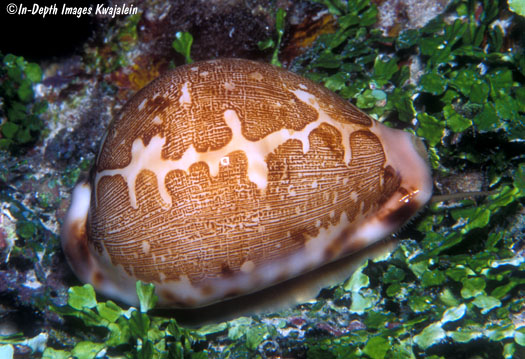
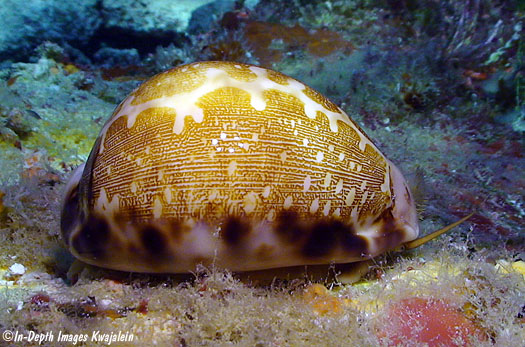
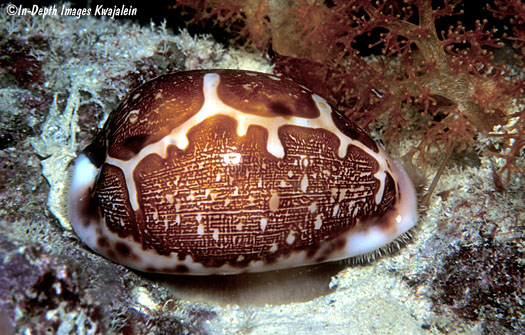
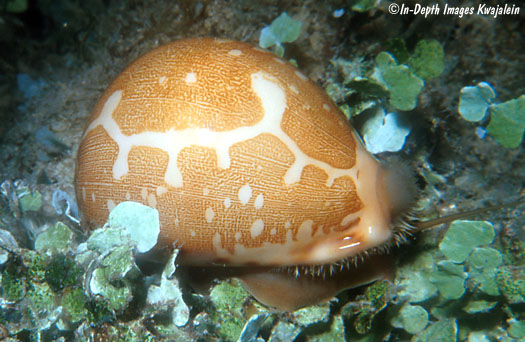
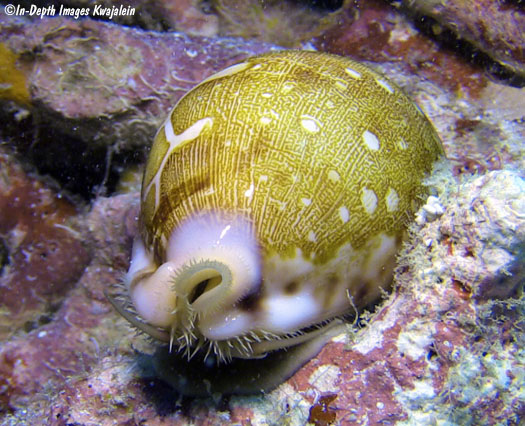
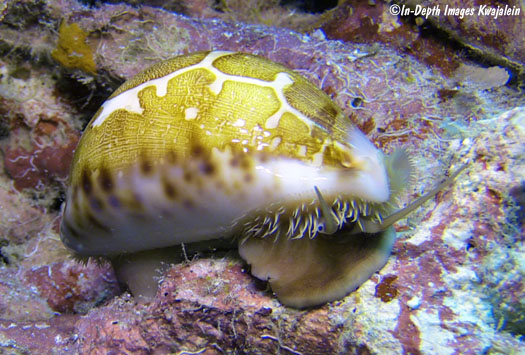
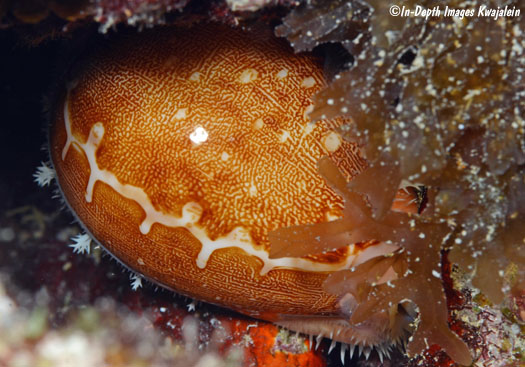
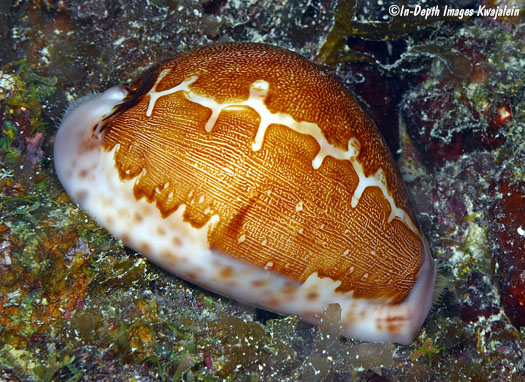
The nearly transparent mantle is difficult to see even though it covers half
of the shell in the specimen below. You can tell where it is by the presence
of short white papillae that are branched at the tips.
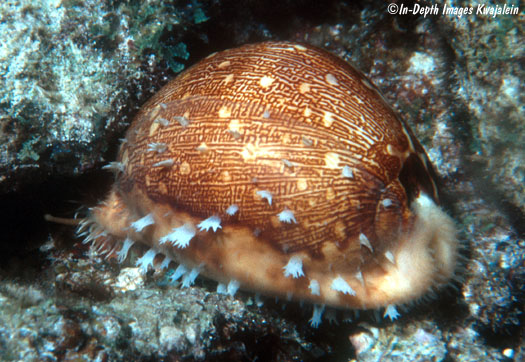
This closeup of the anterior end shows the fringed siphon through which water
is drawn into the shell to pass over the gills. Also the two anterior tentacles
are visible below the siphon.
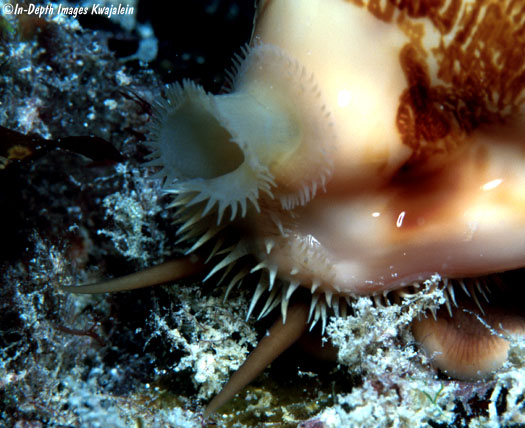
A specimen on eggs.
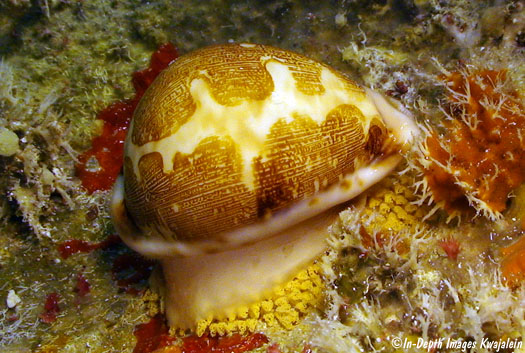
A juvenile specimen shows just
traces of the lined pattern seen on the adult shell.
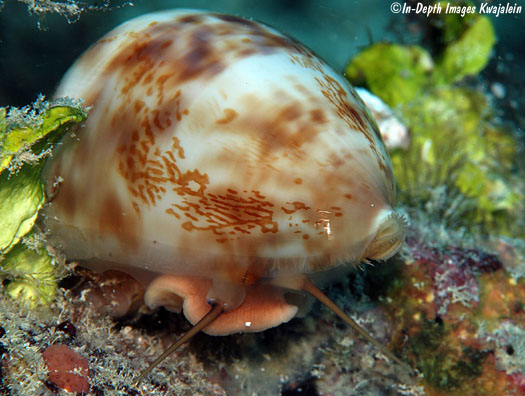
Even younger.
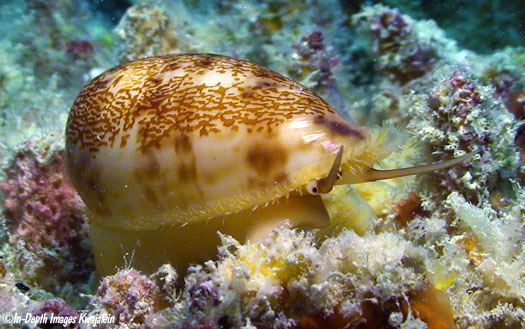
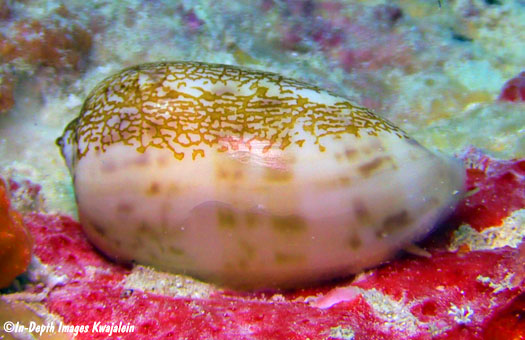
The shell pattern is extremely
variable.
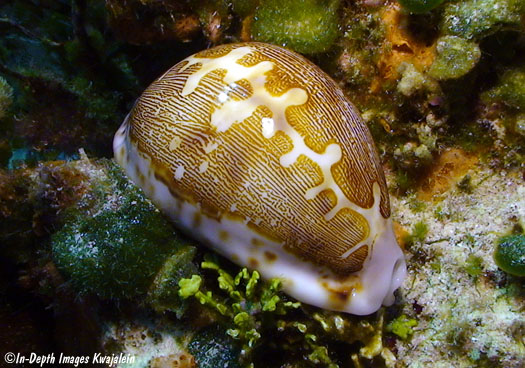
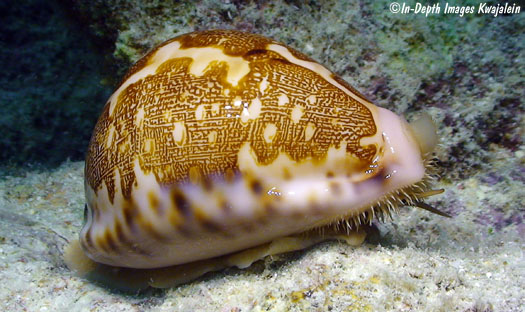
The next few shots of empty shells
show some of the variations. This one has a typical darker blotch in the middle
of the columellar side of the aperture. 68.85mm, 1 April 2007
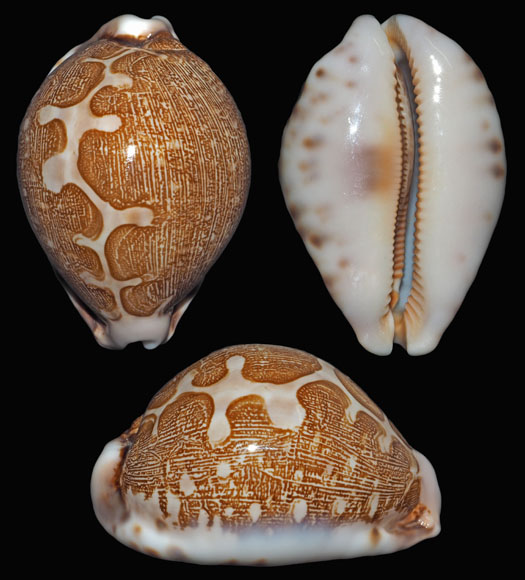
The next one lacks the columellar
blotch. 80.4mm, 14 August 1982
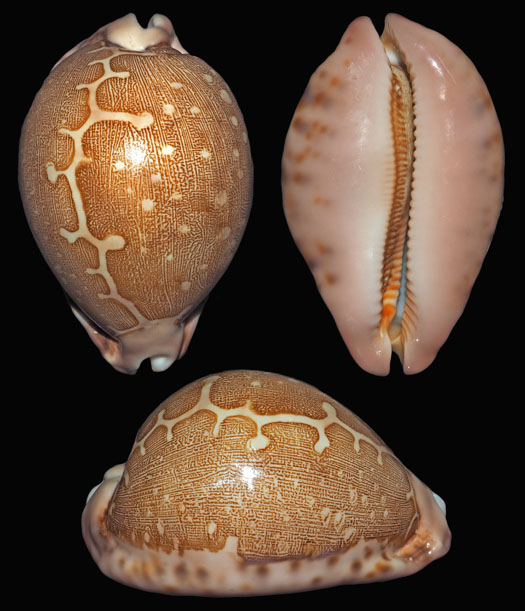
Some shells have a distinct pink
tinge, particularly over the base. 57.7mm, 11 April 2011
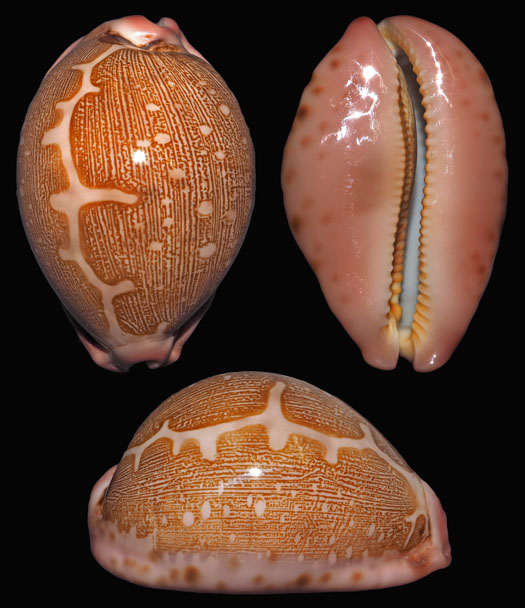
48.6mm, 1982
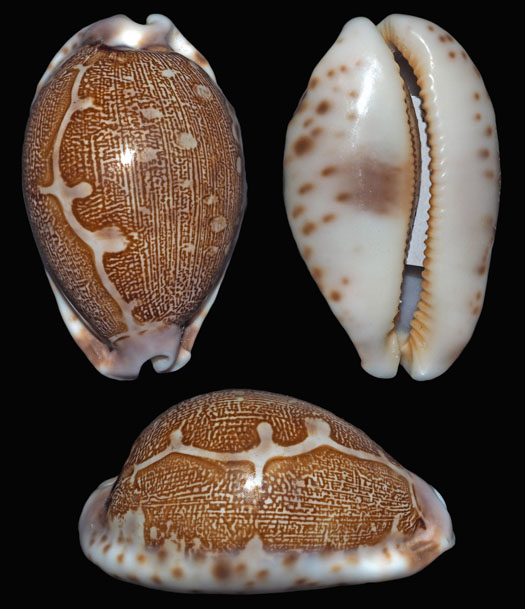
A few more empty shell photos can
be found here.
Created
1 April 2008
Updated 11 November 2020
Back to
cowries
Kwajalein Underwater Home




















